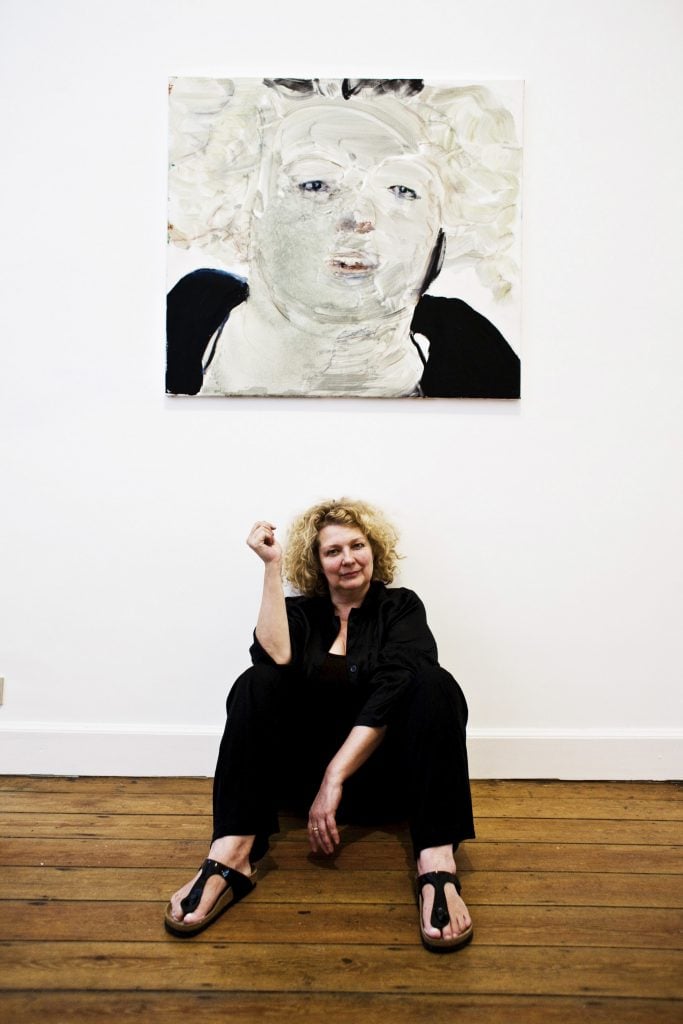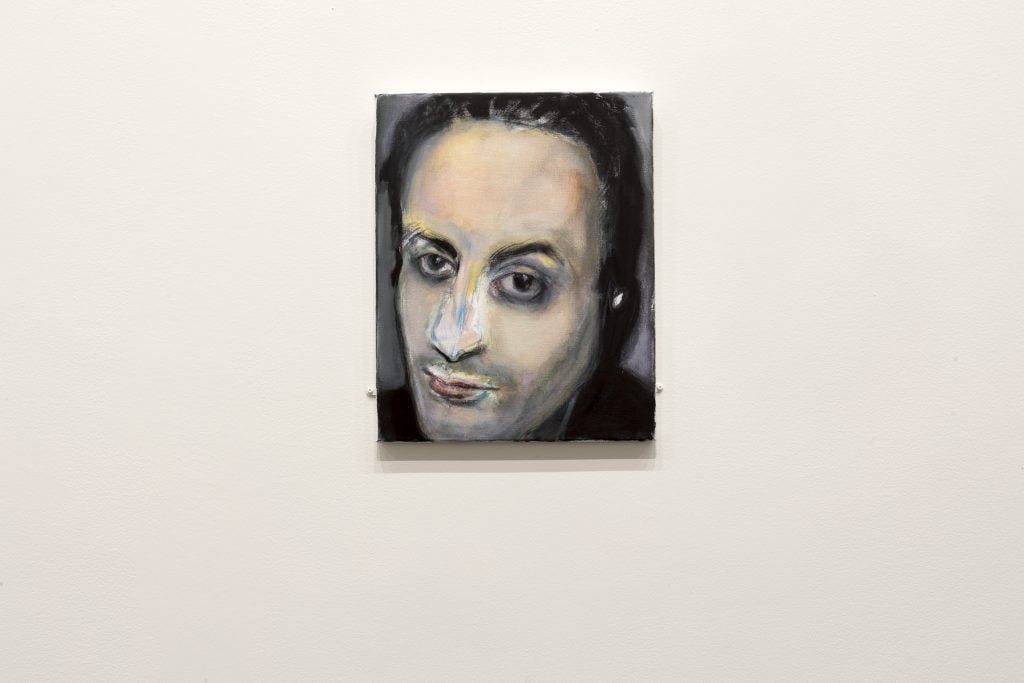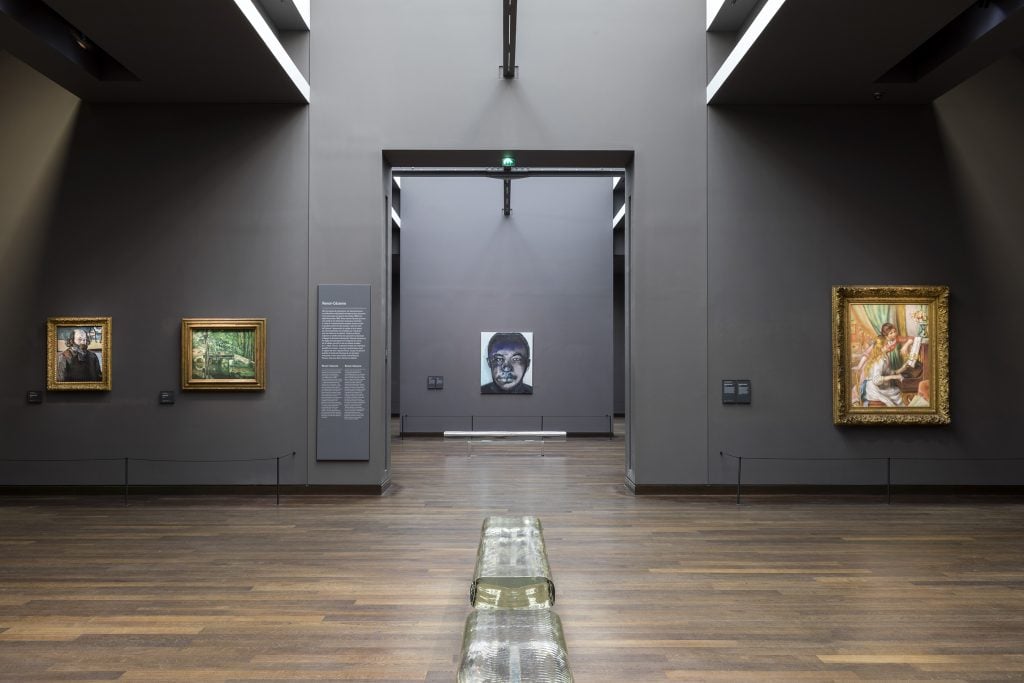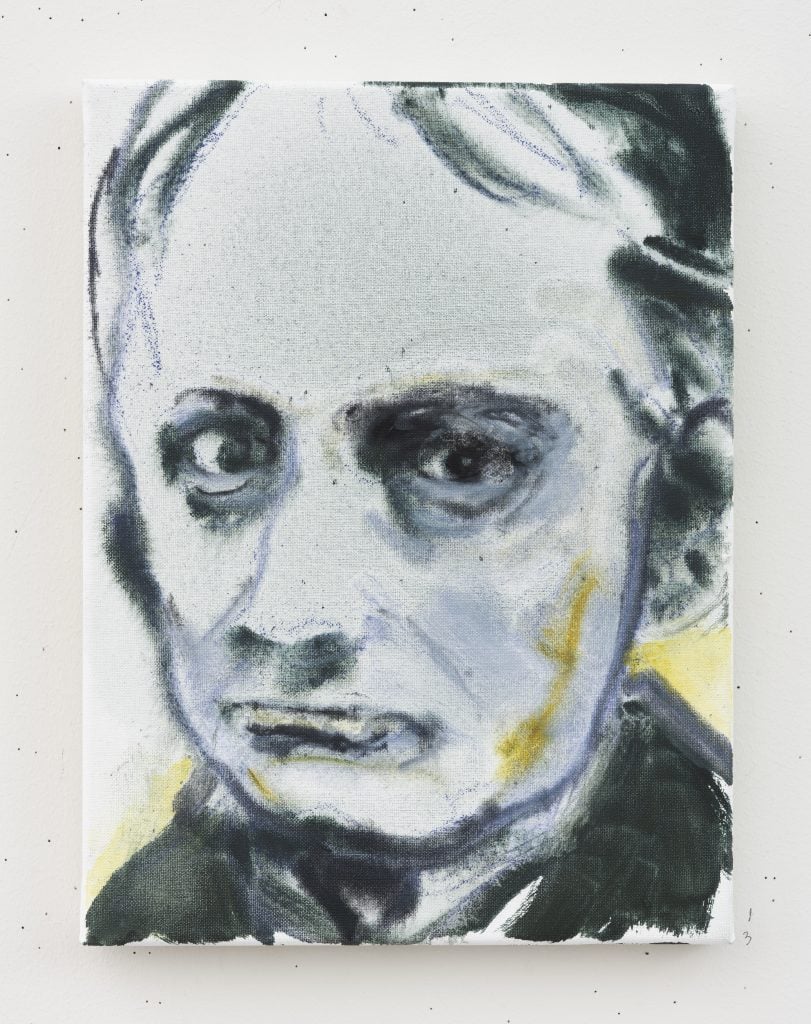People
‘Desperation Befell Me’: The Elusive Painter Marlene Dumas on the Struggle to Paint Throughout a Year Marred by Tragedy
The South African artist has a poignant show on view at the Musée d’Orsay in Paris

The South African artist has a poignant show on view at the Musée d’Orsay in Paris

Devorah Lauter

At first glance, the 19th-century poet Charles Baudelaire and star contemporary painter Marlene Dumas might not seem to have a lot in common. But an unprecedented exhibition of Dumas’s work in Paris shows the fascinating overlaps between the two minds.
On view until January 30, 2022, the Musée d’Orsay is exhibiting 15 paintings by the acclaimed artist that draw on Baudelaire’s celebrated collection of writing called Paris Spleen, a 50-poem compilation from 1869 that captures raw life in the French city of his time. Dumas’s recent paintings of elusive figures poised on the brink of ambiguous actions and thoughts suit Baudelaire’s meditations on modern society and its paradoxical joys that are often mixed with lurking cruelty.
For the first time, a contemporary artist’s works are also being hung alongside Impressionist masters on the Musée d’Orsay’s top floor in a second, concurrent exhibition called “Conversations,” where three major works by Dumas are on view.
But the show was surrounded by sadness. Her partner, artist Jan Andriesse, died from cancer earlier this year, and Dumas also lost her dear friend Hafid Bouazza, the celebrated Moroccan-Dutch writer who helped initiate and form the concept of the exhibition in Paris with Dumas. He died of Covid in April. “Frustration, anger, and heartbreak regarding the suffering and eventual loss of two lives so dear to me ruled,” said Dumas.

Marlene Dumas’s portrait of Hafid Bouazza in “Spleen de Paris” presentation at Musée d’Orsay. Credit: Sophie Crépy.
Born in 1953 in Cape Town and based in Amsterdam, the Afrikaans-speaking Dumas’s subjects are often depicted in large format, usually free of recognizable landscape or background. Her paintings touch on all states and aspects of human nature, including social injustice and the sexually explicit. She renders them in a combination of fluid washes of bleeding pigment, capturing unspoken tension and multiple narratives on a single canvas.
In the works on view at the Paris museum, her artistry is particularly captivating, reverberated by Baudelaire’s words (the current exhibition shares the same title as Baudelaire’s seminal work and coincides with the bicentennial of his birth this year).
“At times, [Baudelaire’s poems] made me quite sad and anxious, as there is a lot of disgust and feelings of being tortured by the time of one’s life,” she said. Baudelaire expresses “the struggle with the evil of the soul and the injustice of political systems,” contrasting it with “the stupidity and vanity of rich idle ladies and so-called gentlemen.”

Marlene Dumas’s “Conversations” presentation at Musée d’Orsay. Credit: Sophie Crépy.
In the show, there are two portraits by Dumas of the now-famous poet, where his ghost-like image appears to gaze with piercing judgement at our collective souls. “The narratives [in his works] switched directions unexpectedly to boomerang in your face,” she said.
“Desperation befell me. How to paint these conflicting emotions and poetic jumps concentrated in single works? I tried to paint a portrait of a man that showed something of all that, in his face.”

Jeanne Duval (2020). Private collection, Madrid. Courtesy Marlene Dumas. Photo : © Peter Cox, Eindhoven
Dumas is open about certain struggles within her creative process, and in fact seems to lean into them. Even if a completed work may appear to have been done swiftly, it is usually the result of extensive trial, error, and exploration of the paint’s temperament. Some works are made in bursts of speed while others are done through a slow and tense process—both are extreme ways of working. “Painting is about exploring one’s fears, but also I feel that it can be beautiful somehow,” she has said.
Those fears took the form of raw heartache during the making of the exhibition at Musée d’Orsay, when tragedy descended into her life. “Hafid, who inspired me so much with his own similarities to Baudelaire… contracted Covid while my partner and father of my daughter was dying of cancer. I felt like the desperate old lady in Paris Spleen,” said Dumas, referring to the character she depicted in the show. Her painting The Old Woman’s Despair (2020) shows a woman almost entirely effaced in black pigment, hunched in a corner.

Charles Baudelaire (2020). Courtesy Marlene Dumas. Photo: © Peter Cox, Eindhoven.
The artist nevertheless managed to attend the Musée d’Orsay prior the show’s opening and was fully involved with the creation and hanging of “Conversations,” which features some of her older works in dialogue with 19th-century masters. The project was a daunting one. “It makes you humble,” she said. “It breaks your heart to see anew that these guys are really good!”
Dumas decided to hang a large 2006 portrait of her friend, Moshekwa, near Van Gogh’s Starry Night, which greets visitors as they enter the galleries. Van Gogh “speaks about not painting the wall behind his friend’s head, but infinity,” she said.
Holding her own opposite imposing male artists is not new to Dumas, who was never part of any artistic movement or group when she studied at the prestigious Ateliers 1963 in Haarlem, the Netherlands. She made figurative paintings when conceptual art still dominated the art scene and consciously chose to “compete a bit with the boys” early in her career, as she has told reporters.

Marlene Dumas’s “Spleen de Paris” presentation at Musée d’Orsay. Credit: Sophie Crépy.
Today, Dumas is credited as one of the most influential painters alive. Her work was the subject of a well-reviewed 2014 retrospective at the Stedelijk Museum in Amsterdam, which traveled to Tate Modern, London, and the Fondation Beyeler, Basel.
Asked about painting’s much-vaunted popularity today, she seems to have retained some of the competitive gumption that motivated her in her early years. “There are a lot of terrible paintings,” she said. “Maybe more than ever. Everyone makes selfies, too. Maybe less people should think they like paintings. They don’t always even take the time to look at what they say they like.”
It’s hard not to agree. And in her own exhibit at the d’Orsay, some works admittedly work better in the larger context of the show, while others are standalone masterpieces and among her strongest creations. Either way, it is a safe assumption that Dumas is not trying to please everyone—especially not when she is putting all that she has and all that she cares for onto the canvas for us to take with us, in whatever way we may.
Marlene Dumas’s “Le Spleen de Paris” and “Conversations” are on view at Musée d’Orsay until January 30, 2022.